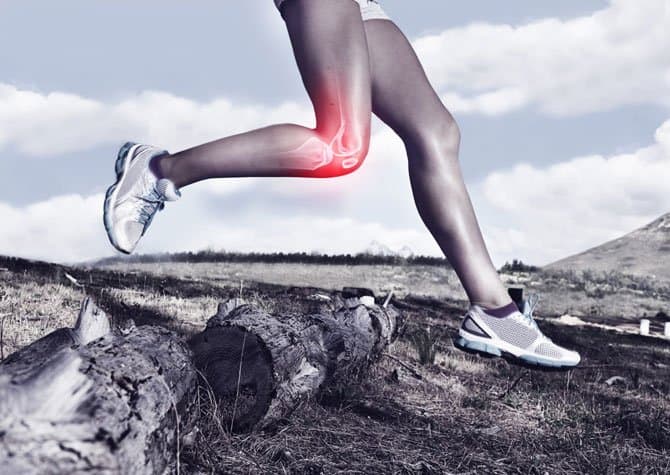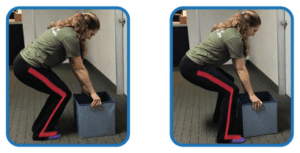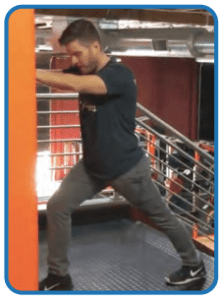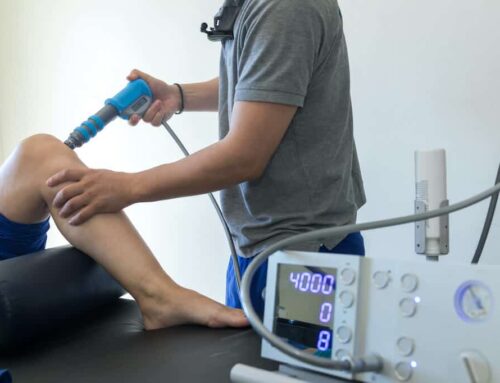
Intro To Understanding Your Knee
This special report will provide you with 5 simple yet effective ways to finally get rid of knee pain. These tips arise from current best evidence as well as years of experience figuring out what exactly does, and what does not, work for fixing knee pain.
Everyone is a little different, so while we cannot guarantee that each tip will have a dramatic impact on your individual pain, the combination of a few of them can dramatically improve your knee health.
Knee pain is extremely common – 25% of adults struggle with frequent bouts. It’s likely that your knee pain did not come on overnight; often it is the result of movement and posture habits over time. For that reason, you will see the best results if you practice each tip regularly until it becomes routine.
My challenge to you is to start incorporating one of these tips over the next week. As that becomes a habit, begin to incorporate the others over time. I think
you’ll be pleasantly surprised with how effective these small changes can be in changing your pain and getting you back to the activities you love!
Tip 01: Bend At Your Hips
When we bend down to pick something up from the floor, we often shift our weight very far forward and keep our trunk upright. This position puts a lot of strain on the knees. A lot of people don’t know that there’s a better way to do it!
Check out the pictures below. In the picture on the left, there is more bend in the knees and ankles. This makes the knee muscles work harder and increases stress through the knee joint. In the picture on the right, there is less bend in the knee and more at the hip. This position distributes the load more evenly between the two joints.
Think of yourself as a piece of paper, folding at the hips and pushing your hips backward the next time you bend to pick something up. Notice how you feel less strain in your knees, versus when you bend with your knees shooting forward over your shoelaces.

Tip 02: Push Through Your Heels
Ascending stairs can be a real pain for the knees, but it’s something we often encounter either in our homes or out in the community. Stepping up is a very knee-dominant activity, meaning that the primary muscles used for the motion are those that attach to the knee. Here’s a little hack to more evenly distribute the workload to other leg muscles: push through your heel! Pushing through the bottom of your heel as you lift yourself up onto a step will engage your hip muscles and reduce strain on the knee. By doing this rather than pushing up through your toes, you can immediately decrease stress through the knee joint.
Tip 03: Squat With A Wider Base Support
Squatting is unavoidable in daily life – we squat to sit down, stand back up, pick items up from the ground, you name it. Squatting is a necessary and safe motion but can be irritating with abnormal mechanics. Oftentimes when I observe someone with knee pain perform a squat, I notice their feet close together and their knees dropping in toward one another. The quickest fix is simply to spread the feet out and try again.
When you widen your stance and start your squat with a broader base of support, you’re already closer to the ground – meaning you’ll require less bending at the knees and the hips to get where you want to go. In addition, this wider base tends to bias your legs into an outwardly rotated position, which reduces the
chance of your knees collapsing inward. (We try to avoid the inward collapse because it puts tension on the inside of the knee and compresses the outside). The next time you prepare to stand from a seated position or squat down to pick up a box, spread out your feet and notice how much more comfortable your knees feel!
Tip 04: Uncross Your Legs
Sitting for long periods can cause stiffness in muscles and joints throughout the body. Crossing one leg over the other, or even underneath your body, can make
your knees stiff and uncomfortable. In this position, you create tension on the outside of the knee and compression on the inside. Sitting this way for short periods is no problem, but staying there for awhile can lead to abnormal strain on the knee joint as well as the muscles and ligaments surrounding it. Instead of
sitting with your legs crossed, keep your feet fat on the floor. If you’re still fidgety, try crossing one ankle over the other – this will change up your position while reducing stress on the knees. In addition, break up long periods of sitting by short walks – to the bathroom, drinking fountain, break room, wherever! Our joints LOVE movement – it actually leads to circulation of joint fluid, which lubricates and nourishes the knee.
Tip 05: Stretch Your Calf
The calf muscle attaches just above the back of your knee and also to the Achilles tendon near the heel. When tight, this muscle can impair your ability to
either straighten your knee, bend your ankle, or both! When you’re unable to straighten your knee, you end up walking around with it
bent all day – this can lead to a whole lot of strain on the knee joint.
When you can’t bend enough at the ankle, you end up bending your knee more to keep you moving forward, and you guessed it – this also increases strain on the knee.
To easily stretch your calf, find a nearby wall. While facing the wall, place your hands fat on it. Put one foot close to the wall with the knee bent. Place the other leg behind you with the knee extended and the foot pointing straight forward. Keep the heel of the back leg fat on the ground so that you feel a stretch in the calf muscle of the back leg. Hold this stretch for about 30 seconds and repeat 2-3 times per side, a few times per day.

BONUS TIPS!
Tip 01: Strengthen Your Hips
The muscles around your hips directly control the position of your knee. For optimal movement and injury prevention, strengthening your hip muscles is very important. Click here to learn a few strength exercises for hip and knee health.
If you feel any pain in your hips while you’re replicating the exercises in the above blog stop immediately and read “Why Hip Pain Should Be Concerning” to gain more knowledge about your body before you continue on or contact a specialist.
Tip 02: Soft Tissue Mobility To The Calf
For further benefit from the calf stretch, use a lacrosse ball or foam roller to push into the calf muscles before performing the stretch in tip #5. This will help with muscle relaxation and decreasing tension in the area. You can sit on the floor with the roller or ball underneath your calf. Apply downward pressure and look for a spot that’s particularly tense and potentially uncomfortable. Hold pressure there for 20-30 seconds as that tension releases before moving to another area.
Tip 03: Asking A Specialist
For most of your minor issues, you can work on the exercises at home. For those who have been dealing with pain or discomfort for more than 4-6 months should consider asking a specialist who’s expertise is in the area of your pain. Feel free to contact our knee specialists by accessing this form.
Blog image: https://www.rush.edu/health-wellness/discover-health/preventing-knee-pain


